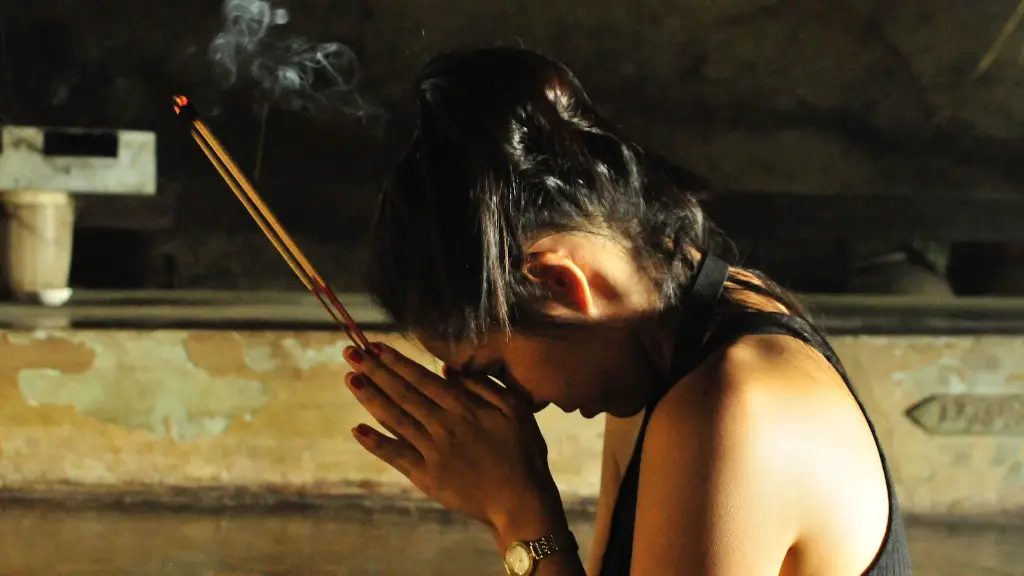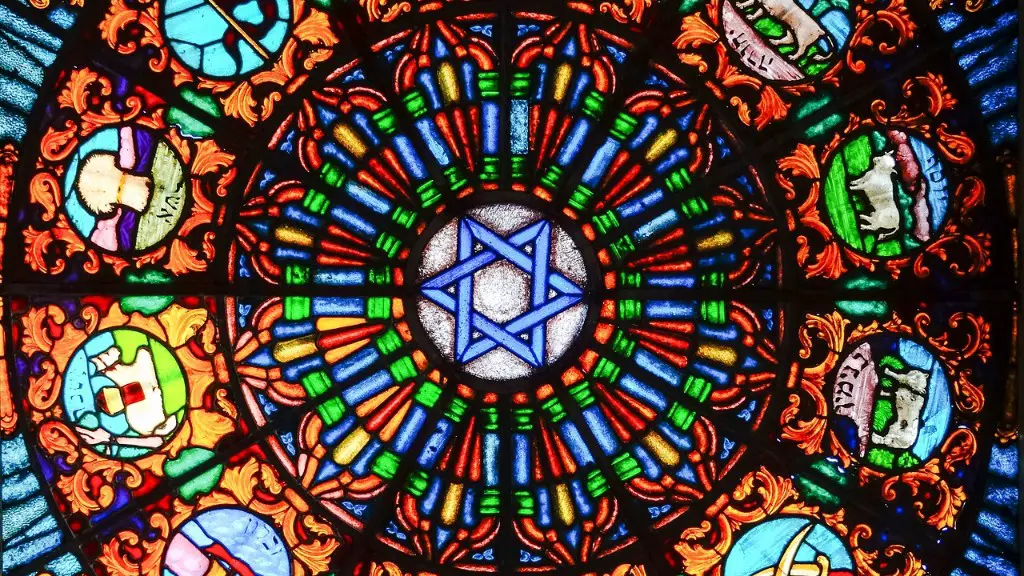Hinduism, an ancient religious tradition, has a rich history of spiritual practices and worship. Among the most important features of Hinduism is the TriMurti (the trimodal personality of the Divine), which is a central concept in the religion. The TriMurti are the three aspects of the Hindu Godhead: Brahma (the Creator), Vishnu (the Preserver or Sustainer) and Shiva (the Destroyer). The significance of the TriMurti lies in its representation of the three fundamental aspects of existence – creation, sustenance, and destruction. It demonstrates the idea that all things must go through a process of transformation, from birth to death and back to new life, and that the cycle of life is in perfect balance.
The TriMurti is an integral part of Hindu mythology and belief, and is closely intertwined with the belief in karma. The TriMurti is seen as a unifying symbol of the harmony between these three forces and their individual roles in the cycle of life. In Hindu culture and thought, these three aspects are inseparable and equal, each playing its own part in preserving the universe. This idea of balance is essential to Hindu belief, as the universe is seen as a dynamic and ever-changing system.
Hindus view the universe as a web of energy, existing and re-emerging from a single source – the TriMurti. Each of the three aspects plays an important role in this system. Brahma is seen as the creative force, creating the universe and all its components. Vishnu is seen as the preservative force, ensuring that the natural order of things is maintained and preserved. Finally, Shiva the destructive force, which brings about the transformation of things, allowing for change and evolution. Together, the three forces create a balanced, interdependent system.
The TriMurti concept is also a reflection of Hindu beliefs about the nature of reality. Hinduism sees reality as composed of two forces, prakriti (material forces) and purusha (spiritual forces). The TriMurti represents the three aspects of reality – material, spiritual, and both combined – in a single form. This concept shows the unity of all things in creation, as well as the underlying harmony between the material and spiritual realms.
The TriMurti concept is also an important element in Hindu spiritual practices. Hindus often use images of the TriMurti in prayer and meditation, as a way of connecting to the divine on a deeper level. Many temples and shrines use images of the TriMurti in the form of a trident, as a symbol of harmony and balance. The trident is seen as a powerful representation of the divine, and it is seen as a reminder of the interconnectedness of all things.
To further understand why is the TriMurti important in Hinduism one should look into the beliefs of Dharma and karma. Dharma, sometimes referred to as right action, is an important part of Hindu beliefs. It is seen as the righteous path of living, thought and action that maintains balance and harmony in the universe. Karma, then, is the consequence of acting in accordance with Dharma. It is believed that those who live in accordance with the Dharma and follow the TriMurti will be rewarded with positive karma, and conversely, those who do not will be punished with negative karma.
In summary, the TriMurti is an important concept in Hinduism. It is seen as a symbol of balance and harmony, representing the three fundamental aspects of existence – creation, sustenance, and destruction. Additionally, the TriMurti is closely intertwined with the concepts of Dharma and karma, and Hindus believe following the teachings of the TriMurti will lead to positive karma and rewards.
Journey & Quest
The journey and quest of the TriMurti to reach enlightenment and achieve a balanced, harmonious universe is one that involves an individual’s personal journey, as well as a collective quest. Every person has to face his own challenges and arrive at individual decisions in order to harmonize the three forces and ultimately reach divine understanding. It is an ongoing process, as individuals will encounter both successes and failures before finding their true place in the universe.
In Hinduism, guidance for this journey is offered through numerous scriptures, such as the Bhagavad Gita and the Upanishads. These scriptures provide insight into the relationship between the three forces, the importance of a balanced life, and the relationship between Dharma, karma and the TriMurti. For many Hindus, reading these scriptures is seen as an essential part of the journey and as a way for individuals to gain knowledge about the TriMurti and their relationship to the universe.
In addition to studying scripture, individuals often seek the guidance of spiritual teachers, or gurus, who can provide insight into the beliefs and practices of Hinduism. These teachers can provide the tools and understanding necessary to help individuals on their journey of self-discovery. By studying and engaging with their teachers, individuals gain valuable knowledge and insight which can be applied to the ever-evolving task of harmonizing the three aspects of the TriMurti.
Finally, it is also important to remember that no one is perfect, and that mistakes are inevitable. Each individual will make mistakes and take wrong turns in their journey and quest of the TriMurti. In Hinduism, it is seen as part of the learning process, and those who truly strive for knowledge and understanding are seen as having a greater understanding of the TriMurti and the cosmos.
Relationship between the Three
The relationship between the three aspects of the TriMurti is often seen as a cyclical one; this implies that without any one of the three aspects, the cosmic cycle cannot be completed. For example, without Brahma (the creative force), nothing can come into being, and without Shiva (the destructive force), nothing can be destroyed or changed. This suggests that none of the three aspects of the TriMurti is more important than the other, as each has an essential role to play in the process of cosmic transformation and evolution.
At the same time, however, it is important to remember that although these three aspects may be seen as equally important, they are not equal in power or in force. It is believed that none of the aspects can control the cosmic cycle, as they can only contribute to and affect it. For example, although Brahma is the creative force, it is ultimately destiny and fate that decide the unfolding of creation. This idea encourages individuals to be accepting of their circumstances, as ultimately the only power we have is that of our own actions.
The relationship between the three forces is also seen as a reflection of the relationship between the individual and the divine. Just as the TriMurti create a balanced cosmos, so too must individuals strive to bring balance to their own lives with the help of the Divine. By understanding the relationship between Brahma, Vishnu and Shiva, individuals can better understand the relationship between their individual lives and the divine, allowing them to harmonize their personal lives with the larger cosmic cycle.
Cultural Significance
The TriMurti is a powerful representation of the Hindu belief in interconnectedness and balance, and it is a symbol that is deeply integrated into the culture. In Hindu art and literature, the TriMurti is often portrayed in trident form, as a reminder of the importance of harmony and balance in the universe. In addition, the TriMurti is closely associated with the concept of Dharma, which emphasizes the importance of pursuing truth, justice and righteousness. This is seen as the path to achieving spiritual liberation, and is often seen as a symbol of hope and progress.
The TriMurti is also closely associated with the celebration of festivals and rituals. In Hinduism, these festivals and rituals are seen as a way to connect with and honor the divine. Thus, many rituals and festivals involve the use of images of the TriMurti, as a reminder of the divine and the interconnectedness of life. In this way, the TriMurti is seen as a source of strength, inspiration, and comfort.
Finally, the TriMurti is also a reminder of the importance of respect and tolerance. In Hinduism, each of the three aspects of the TriMurti is seen as equally important and valuable, and tolerance of others’ beliefs plays a crucial role in achieving harmony in the universe. This concept of tolerance is one that is embraced by many Hindu communities and is seen as a symbol of unity.
The Divine Nature of the TriMurti
Although the TriMurti is often seen as representing the three aspects of reality in the universe, it is also considered to have a deeper, divine significance. This divine nature of the TriMurti is often seen as a symbol of oneness, as it represents three aspects that are ultimately part of the same divine energy. For many Hindus, the TriMurti serves as a reminder of the importance of understanding the unity of all things and of being in harmony with the divine energy and the cosmos.
The divine nature of the TriMurti is also seen in Hindu devotion to the three deities – Brahma, Vishnu, and Shiva. Each of these deities is seen as embodying a unique aspect of the divine, and each is honored and worshipped in Hinduism as part of a balanced and harmonious relationship with God. In Hinduism, individuals are encouraged to honor each of the separate aspects of the divine at once, in order to recognise and appreciate the unity of the divine.
Furthermore, the divine nature of the TriMurti is reflected in the Hindu concept of moksha. This is the process of breaking the cycle of karma, and it is a process that requires understanding and recognition of the divine nature of all things. Thus, it is believed that those who have attained moksha have come to understand and appreciate the ultimate oneness and harmony of all things, and the divine nature of the TriMurti is seen as a reminder of this.
Conclusion
The TriMurti is an integral part of Hinduism, and it is a symbol of the interconnectedness of creation, destruction, and sustenance. The TriMurti is also closely entwined with the concepts of Dharma and karma, and it is seen as a reminder of the importance of pursuing truth, justice, and righteousness. Additionally, the TriMurti is seen as a reminder of the importance of respect and tolerance, as well as the divine unity of all things. For Hindus, understanding the significance of the TriMurti is essential for achieving balance in the universe and leading a harmonious life.


